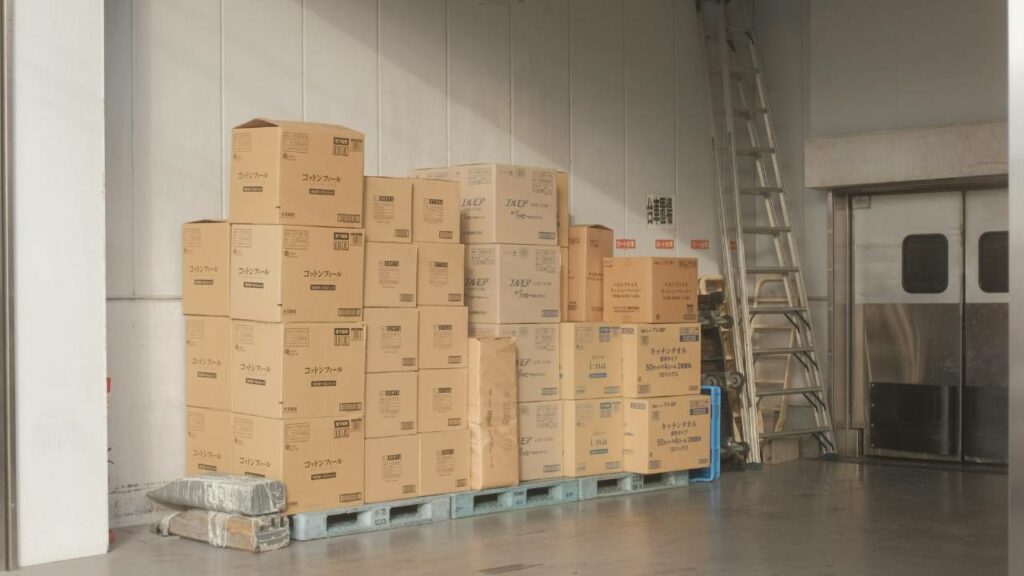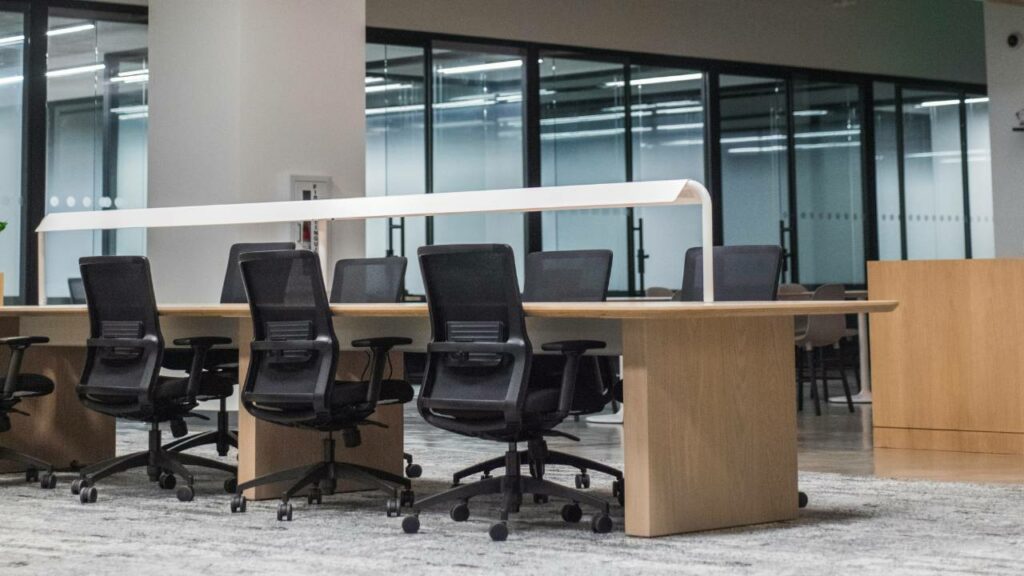Moving your office can be a significant undertaking, requiring meticulous planning and execution. It’s not just about transporting desks, chairs and computers; it’s a complex process involving coordination, timing, and attention to detail to ensure a smooth transition. It’s essential that you approach your office move strategically to minimise downtime and keep your operations running efficiently while staying ahead in the digital age.
One of the first steps in orchestrating a successful office move is to assess your needs and formulate a comprehensive plan. Consider the size of your new space, the layout, and how it will affect your day-to-day operations. This is also the perfect time to declutter and decide what to take with you, what to dispose of, and what may need updating. Effective planning also involves notifying your clients and suppliers of the impending move, thus ensuring uninterrupted service.
Engaging the services of a professional moving company that specialises in office relocations can be greatly beneficial. The expertise they bring can reduce the burden on your staff and facilitate a smoother move. It’s important to research and select movers with positive references and the necessary experience. Also, don’t overlook the importance of setting up utilities and technology infrastructure in the new location well in advance – the last thing you want is to move into an office that isn’t fully operational.
Crafting a Detailed Moving Plan
When you’re preparing for an office move, a detailed plan is essential. It helps you understand the requirements of both your current and new space, and allows you to create a realistic schedule to design a stress-free relocation.
Assessing Your Current and New Space
Firstly, conduct a thorough survey of both your existing office and the new premises. Note down the dimensions and any fixed structures that could affect the layout. Make sure you have an accurate floor plan for the new office, which will help you visualise where everything will fit.
Creating a Comprehensive Moving Checklist
Your moving checklist should be exhaustive and itemised. Begin with large items like furniture and work your way down to smaller office supplies. Be sure to include tasks such as updating address details, arranging for utilities, and booking the movers.
- Inventory of items to move
- Utility switch-over
- Address update
- Mover reservation
Following a detailed plan will help you ensure nothing is overlooked.
Setting Realistic Timelines and Deadlines
Set clear deadlines for each stage of the move, taking into account the lead times required for professional movers. Factor in a buffer for unexpected delays to maintain a steady pace without rushing. Your timeline should be laid out in a table format for clarity.
Budgeting and Financial Considerations

When planning your office move, it’s essential to have a clear understanding of the financial aspects to ensure a smooth transition without overstretching your budget.
Estimating Moving Costs
To effectively estimate your moving costs, begin by reaching out to several moving companies for quotes. Ensure that these quotes are detailed, breaking down costs such as packing materials, transportation, and insurance. Keep an eye out for any additional fees that might apply, such as parking permits or weekend moving charges, and note these in your moving budget. Compare the quotes based on services offered and don’t forget to factor in the reputation and reliability of the movers.
Allocating Funds for Unexpected Expenses
Set aside a portion of your budget to handle any unexpected expenses. This could include last-minute repairs at your old office, delays causing additional rental fees, or even a sudden need for specialised equipment to move particular items. A rule of thumb is to allocate approximately 5-10% of your total moving budget for these contingencies. This will help ensure that you’re prepared for unforeseen costs without jeopardising the financial stability of your business during the move.
Navigating Logistical and IT Concerns

When moving your office, addressing both logistical and IT challenges is vital to a smooth transition. Handling your IT equipment with care and establishing a new network should take precedence.
Devising an IT Strategy
Your IT strategy should encompass a detailed inventory of all your technology resources. Document each item, from servers to workstations. Ensure you have a clear plan for disconnecting and reconnecting all your IT equipment. This may involve coordinating with your internet service provider, to ensure minimal disruption in services when you switch locations.
It’s important to protect against data loss; hence, back up all systems before the move. If necessary, consider cloud services or a secure off-site backup. Transitioning to your new space may require new network configurations; thus, having a network specialist on board will help in seamlessly integrating your systems into the new office space.
Managing Movers and Logistic Partners
Choosing reputable movers should be at the top of your list, and for those located in Ireland, Halton Removals Ireland could offer the reliable service you’re looking for. Assess the experience they have with office relocations, particularly in handling IT equipment.
Create a clear timeline with your movers and communicate any requirements specific to your IT infrastructure. Your movers should understand the importance of careful handling to avoid jostling or damage. Also, ensure there’s coordination between moving schedules and your IT team, which allows for the dismantling of your network in the old office and setting up in the new one. This reduces downtime and gets your operations back online quickly.
Ensuring Effective Communication and Employee Engagement
Effective communication and employee engagement are crucial for a smooth office move. You need to keep everyone updated while maintaining a positive atmosphere. By involving employees and clearly communicating with all stakeholders, you’ll navigate the transition successfully.
Coordinating with Managers and Departments
You’ll want to ensure that managers are fully briefed on the move’s details so they can relay accurate information to their teams. Set up a communication chain to keep everything orderly. Managers should organise team meetings to discuss the move timetable, address concerns, and gather feedback. Encourage open dialogue to avoid any miscommunication. Also, consider a centralised portal where everyone can access move-related documents and updates.
Updating Clients and Partners on Relocation Details
When it comes to clients and partners, clear communication is key to maintaining trust. Prepare a formal notification—perhaps an email or a letter—that outlines the move’s dates, reasons, and benefits. Include new contact details and reassure them that business will continue as usual. Additionally, a social media announcement might reach a wider audience and can be an effective way to keep external stakeholders informed. For ongoing engagement, regular updates through a newsletter can be useful, ensuring clients and partners feel valued and well-informed.
Mitigating Risks and Ensuring Business Continuity

When relocating your business, it’s crucial to minimise risks and maintain the continuity of your operations. Ensuring smooth transition requires a comprehensive strategy and careful handling of your sensitive data.
Developing a Business Relocation Strategy
To safeguard your business continuity, you need to craft a detailed relocation plan that addresses every phase of the move. Start by reviewing your current lease agreements and service contracts to avoid any potential legal pitfalls. Next, it’s vital to arrange for insurance coverage to protect your assets during transit. This should include property insurance and business interruption insurance to mitigate financial losses if unexpected delays occur.
Your strategy must also establish clear communication with employees, suppliers, and customers, informing them of the moving schedule and any temporary disruption in services. Assign relocation responsibilities to a dedicated team or manager to oversee the process and ensure that all details are covered.
Protecting Sensitive Data During the Move
Data security is paramount in general but especially during a move, as sensitive information is at a higher risk of being compromised. Before the move, conduct a thorough data audit to identify all physical and digital data that requires special handling. For physical documents, use secure containers and limit personnel access. For digital data, ensure that all files are backed up and encrypted.
It’s essential to coordinate with your IT department or a professional data security firm to manage the transfer of your servers and hardware. Establish strict security protocols for the transport and setup phase, and consider transferring your most sensitive data via a secure cloud service to reduce the risk of data loss or breaches.
By meticulously planning your business relocation strategy and rigorously protecting your sensitive data, you’ll effectively mitigate risks and contribute to the smooth continuation of your business activities throughout the move.
Conclusion
Moving your office can be a seamless process when you’re equipped with the right advice. Your efforts in planning, organising, and collaborating with professionals will greatly determine the success of your move.
May your office relocation be a positive step forward for you and your team. With careful preparation and a can-do attitude, you’re set for a smooth transition.
